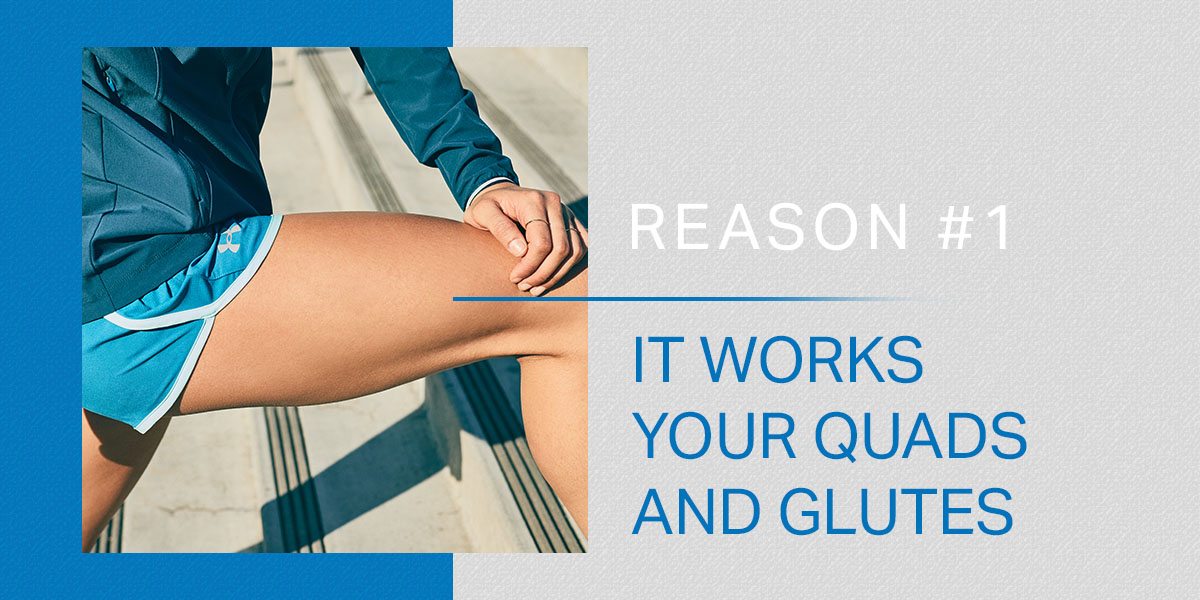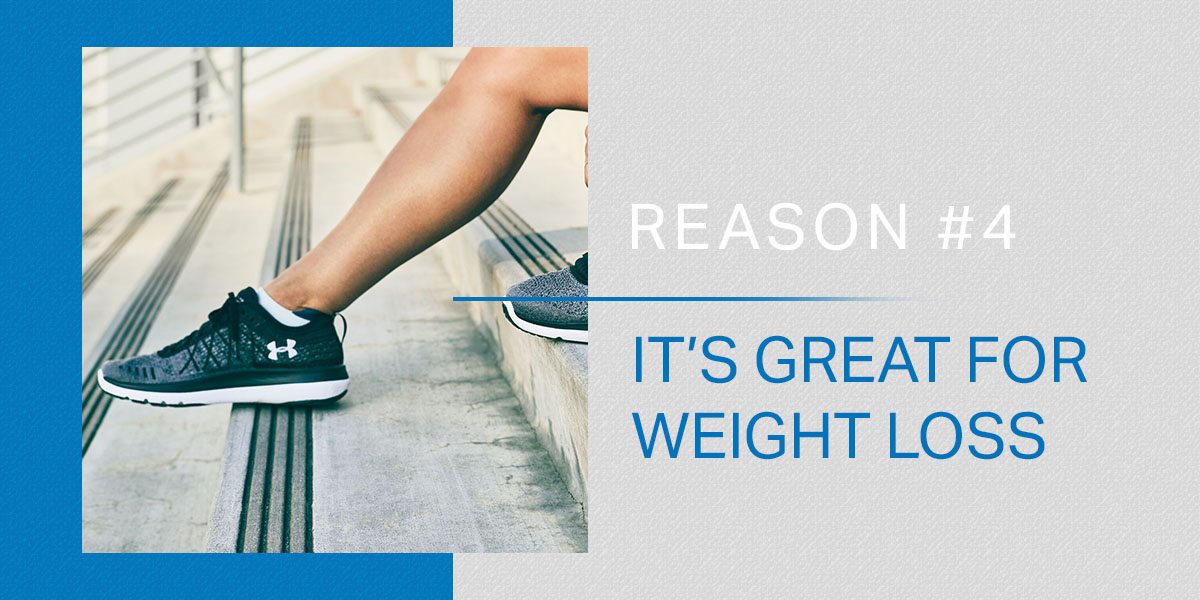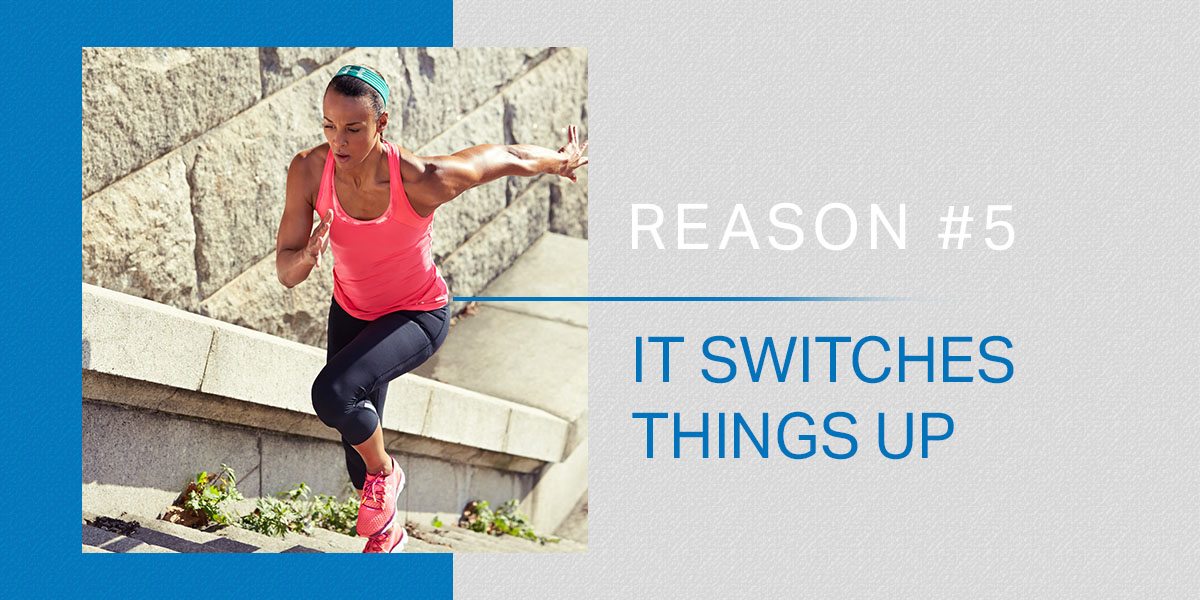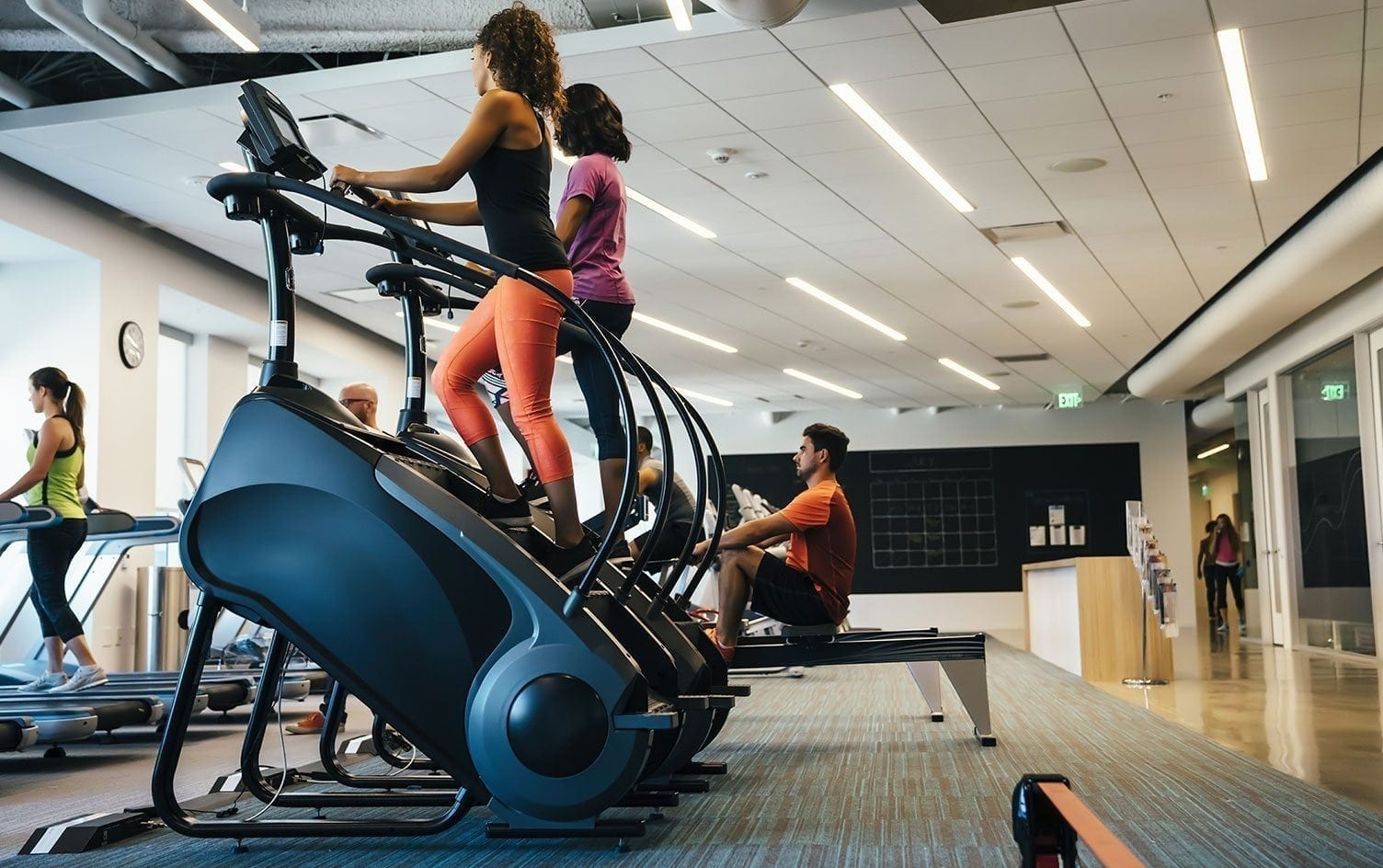Let’s face it: Cardio can get old fast. That’s probably why most gyms are steadily investing in more cardio machine options. Aside from expected mainstays like treadmills, ellipticals, rowers and stationary bikes, new equipment is popping up in gyms everywhere — and in the case of the stairclimber or stepmill, it’s a textbook example that “what’s old is new again.” Stair machines may feel a little retro, but when you consider the benefits, it’s hard to figure out why these powerhouses ever went out of style.
As for why they’re back now, the answer is pretty simple. “There is a trend in the fitness industry that I like to call the workout revival,” says Chris Falcon, CPT and founder of Reactive Performance Enhancement Center in Glenview, Illinois. “Trainers and exercise enthusiasts are embracing the fundamentals, and nothing is as fundamentally good for you as walking up a flight of stairs.”
Before jumping into why trainers are so excited stair machines are back, it’s worth noting that there are many versions: the stairclimber, StairMaster and stepmill, just to name a few. While some allow you to climb actual stairs, others have two pedals that simulate the stair-climbing motion. Regardless of which type of machine your gym has (if it’s more than one, lucky you!), you’ll reap many benefits.

Lots of forms of cardio utilize your quads and glutes — running and cycling among them — but if you’re looking to work this area in particular, stair climbing takes things to a whole new level. “Using the StairMaster is unique in that you must push against gravity throughout a larger range of motion than most other pieces of cardiovascular equipment,” Falcon explains. “That increased degree of knee and hip flexion places a greater demand on the quads and glutes.” What’s more, your legs take turns moving almost all of your bodyweight throughout the entire workout, which doesn’t happen when you’re running, cycling, rowing or swimming. “In many ways, the StairMaster is a motorized lunging machine,” Falcon says.

You know that winded feeling you get when you take the stairs, even when you’re in the best shape? Well, these machines provide a similar effect, which means that even if you’re a marathon runner, you’re going to get a great cardio challenge. That’s partially due to how heavily it recruits your glutes, the largest muscle group in the body. “Using the glutes requires greater oxygen consumption, therefore requiring you to breathe heavier and get winded sooner,” says William Kelley, a doctor of physical therapy and athletic trainer at USA Sports Therapy in Miami. “The large muscle group utilization creates a greater systemic response, as in greater spike in heart rate and blood pressure, which makes it more effective cardio than something that is slightly more passive such as the elliptical or cycling.” In other words, when you use the stairmaster, you get more bang for your buck cardio-wise.

On top of that, the stairclimber is joint-friendly. “Unless you are running the stairs, your body stays in contact with the surface at all times,” Falcon points out. This is notably different from running, which places stress on your lower-body joints. “While running, there is a moment when your whole body is in the air, and all of your body weight plus additional forces come down on one leg,” he says. But when climbing stairs, “the transfer of the load is almost seamless, which means way less impact on your joints.”

While experts agree you shouldn’t make the StairMaster your only form of cardio due to its intensity, it’s a very effective supplemental workout for those who are looking to lose weight. “If you do it right and with proper form, you’ll end up burning more calories because you are having to move yourself and can’t rely on momentum,” says Mike Donavanik, a certified strength and conditioning specialist, personal trainer and fitness expert based in Los Angeles. When you can’t rely on momentum the way you would on an elliptical or bike, for example, you work harder. As for what constitutes proper form, the two keys are standing upright and not leaning on the machine when the workout starts to get tough.
READ MORE > ARE ABS WORTH THE HYPE?

Keeping your body guessing is essential when it comes to getting in shape, which means that for the non-injured exerciser, a mix of both low- and high impact-cardio is ideal. “The benefit of low-impact cardio is that it gives your joints, bones, ligaments, muscles and tendons a break,” Donavanik says. “Higher-impact cardio is important, too, for bone density, speed and power, but it’s good to have a combination.” It’s also easy to change up your routine on the stairclimber so your body doesn’t get used to it. Both interval and steady-state work are possibilities, and it’s easy to make things interesting by skipping a step, side-stepping or incorporating leg kickbacks. The options are endless!




